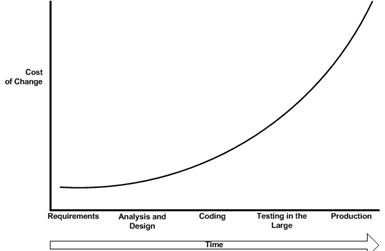Is there anything worse than buying something online, only to realise you don’t like it on arrival?
Clothes are probably the most common item for this type of thing:
- See the beautiful model on ASOS
- nail the look you want,
- buy the look
- pay the next day delivery
- wait impatiently for it to arrive
- try it on
- decide you don’t look like the beautiful ASOS model
- pack it up and send it back.
The feeling this experience leaves you with is never one of relief, but relative disappointment.
Granted you are not out of pocket, but something didn’t quite work out the way you imagined it would.
Mitigating this by making sure customers are happy with the product before they buy it is becoming more common with businesses experiencing high volumes of returns.
For example, as a keen golfer, I really learned that the shop where I buy my clubs has a policy of charging a mandatory £20 up-front fee to get properly fitted and try out the club, before you decide to buy.
Although the idea of an initial charge might put some people off, if you think about it, it really works on several levels.
As a customer, if the intention is to invest in getting your handicap down, then £20 to ensure you are getting the best club for your game, feels like money well spent.
As the golf shop owner, lowering the chance of returns by taking the time to work with you to get the best possible club for your budget is better than receiving a used club and a disappointed customer 4 weeks later.
I could talk ASOS returns and golf all-day but you came here to read about advertising, so with those examples in mind, here goes…
The cost of change
Creativity in advertising, (like fashion) is largely subjective – for every person that loves an idea, there is always someone who hates it.
Sometimes this means change and in the context of advertising campaigns, change is a word we like to avoid. The reality is, time is money and changing a creative concept means more time spent and less progress, which impacts everyone involved.
Much like our golf shop owner, one of the aims of any good advertising agency is to mitigate the chance of change through ensuring the client is happy with the direction of the campaign throughout the process.
Approvals, status reports, contact reports are all synonymous with keeping a project on track and everyone on the same page – but the most effective “no-returns insurance policy” in any advertising campaign, is the foresight provided by strategic planning.
 The impact (read: cost) of a change in the advertising process increases as the project evolves – make a change to the direction at the early stages of a project, before creative direction is presented and the cost is lower than the change towards the end, where not only the agency but suppliers are involved.
The impact (read: cost) of a change in the advertising process increases as the project evolves – make a change to the direction at the early stages of a project, before creative direction is presented and the cost is lower than the change towards the end, where not only the agency but suppliers are involved.
This is particularly relevant to digital projects, for example a website.
Changing a functional specification is simply a project manager making changes to words on a document.
On the other hand, changing a fully built website means time for, designers to re-work designs, developers to re-code the site based on those designs, QA to re-test, project management to oversee the change management and the account team to advise on when these changes will be in place.
Hate unexpected surprises? You need planning
Strategic planning comes into play at the start of a campaign – investing time and budget here, gives you a sound foundation that allows for the rest of the campaign to be built on.
In a nutshell the planner ensures that an understanding of consumer attitudes and reactions is brought to bear at every stage of advertising development.
First, the people who market products and create ads are not necessarily all representative of the people at whom those products and ads are aimed. Also, the consumer doesn’t always take out what the advertiser is trying to put across. Planners are there to keep in touch with consumers.
Then, every agency needs a disciplined system for devising advertising strategy and producing creative work that will be effective in the market place. The planner uses market and research data to guide this process.
Finally, from a creative point of view, there is a suspicion that research, which plays back the consumer’s innate conservatism will stifle anything unconventional. The planner’s role in this situation is to bring skillful and sensitive interpretation of research and to spot openings for development.
The excitement of wanting something that looks good quickly means planning can often be overlooked in the process as there is always a desire to get to the shiny creative ideas.
However, without planning, you are adding a level of risk that what is being said in your advertising and where it features will not fit with your consumer.
On every campaign, think strategy first – what are you trying to do, who are you talking to, what do you want to say and why will people care.
If you can get this nailed, everything beyond that point will fit perfectly.
If this all sounds like something that you and your business could use some advice on, contact Paul at Paul.james@ardmore.co.uk. He’ll explain our 5-D Strategic Planning Process, discuss your objectives and needs and he’ll even buy coffee!





